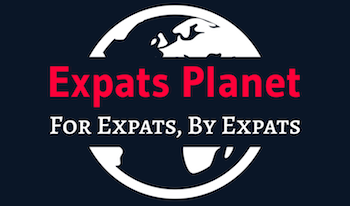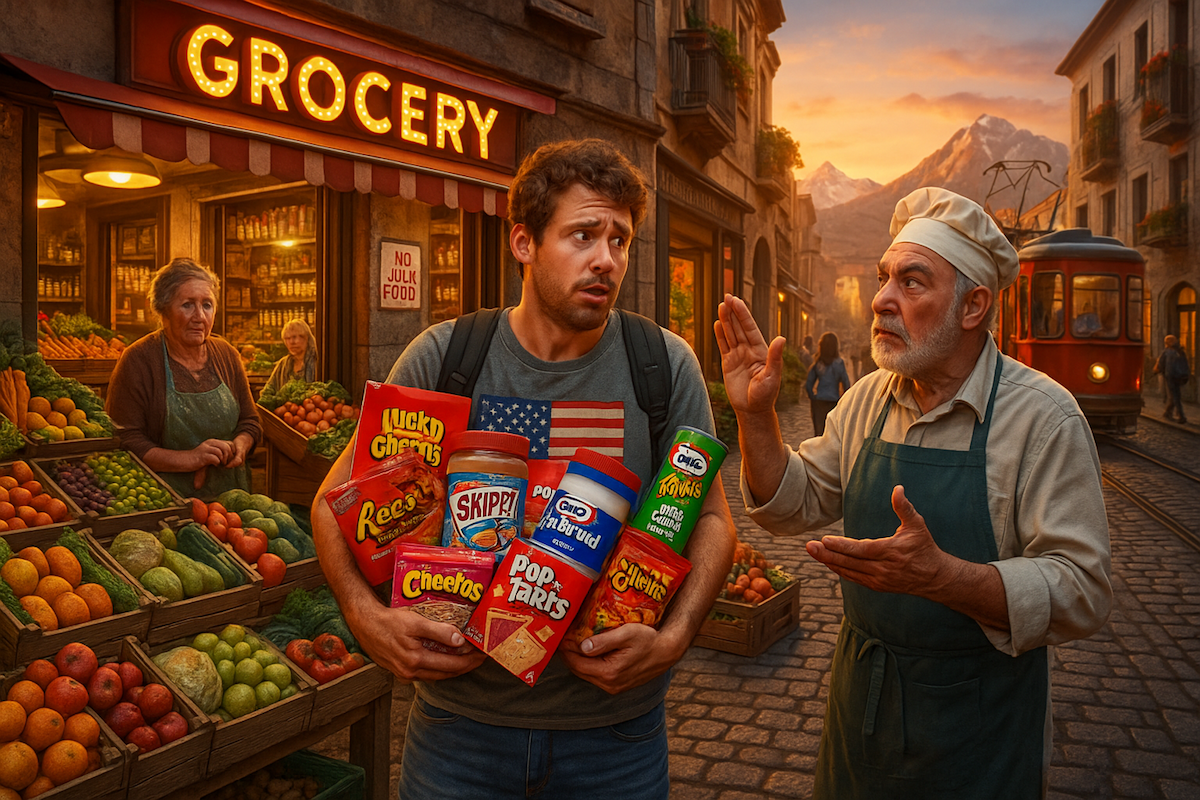Contents
- What Made It Out of America… Then Disappeared
- 1. Pepsi with BVO: Banned and Rebranded Abroad
- 2. Original Skittles: The Rainbow Looks Different Overseas
- 3. KFC Chicken Coating: The Additive That Crossed the Line
- 4. Mountain Dew Variants: Forbidden Ingredients in the Recipe
- 5. American Cereal Brands: What Canada and the UK Wouldn’t Swallow
- 6. Processed Cheese Singles: Not Welcome in European Supermarkets
- 7. Flamin’ Hot Everything: Too Hot for the Law
- Why You Should Be Asking Questions About What’s On Your Plate
What Made It Out of America… Then Disappeared
Same Brand, Different Standards? These Products Didn’t Make the Cut Abroad
Ever walked into a Carrefour in France or a Billa in Bulgaria looking for that familiar neon green bottle of good ol’ Mountain Dew, only to come up empty?
I did.
Multiple times.
I thought maybe I was in the wrong aisle.
Turns out, I was in the wrong country.
See, it’s not that Europeans have better taste (although after spending a significant amount of time in Spain, I’d argue they do when it comes to Tapas and Ham).
It’s that some American food products were quietly yanked from the shelves over there.
Not because they didn’t sell.
Not because people hated the flavor.
But because of something far juicier:
- Banned ingredients.
- Corporate cover-ups.
- And the kind of public backlash that makes companies go silent faster than a drunk tourist at passport control.
If you read my article on 8 Shocking American Foods Banned in Europe, this one’s about the products that actually made it abroad but were quietly pulled or reformulated after the fact.
I first noticed it while living in France, craving a familiar sugar rush. Just a simple taste of home.
I remember standing in the snack aisle, staring at a bag of “Skittles Crazy Sours” that looked… off.
The colors were muted, the packaging was different, and when I flipped it over, the ingredient list looked like something from a vegan yoga retreat.
No artificial dyes. No titanium dioxide.
I thought, What happened to the candy of my childhood?
Turns out, it didn’t make the cut.
And neither did a long list of other American classics that were either banned, reformulated, or pulled so quietly you’d think the CIA was behind it.
From fluorescent sodas to nuclear-orange cheese singles, these products faced an international reckoning, while still being served up daily in the U.S.
In this article, I’m pulling back the plastic wrapper on 7 American food products that got the boot overseas and why.
You’ll laugh, you’ll cringe, and by the end, you might just start reading the fine print on your next grocery run.
1. Pepsi with BVO: Banned and Rebranded Abroad
When I first moved to France, I remember spotting a bottle of Pepsi at a local Carrefour.
The label looked familiar, but something was off.
I flipped it over.
No brominated vegetable oil.
No BVO!
The ingredient I used to chug in every soda-fueled college cram session back in the U.S.?
Vanished like a shady expat after overstaying his visa.
Turns out, BVO, an industrial flame retardant also used in furniture, was banned in the EU and Japan years ago.
Pepsi reformulated for those markets without skipping a beat.
Meanwhile, in the U.S., they dragged their feet until consumer pressure forced them to act.
So the next time someone tells you “regulations kill innovation,” remind them Europe figured out how to make Pepsi without furniture polish.
Bottom Line: If they can make a cleaner version for Europe, they can do it for you.
Ask why they haven’t.
2. Original Skittles: The Rainbow Looks Different Overseas
While living in Poland, I bought a bag of Skittles at a corner shop. The colors looked…sad.
Like a low-budget reboot of the candy I remembered from childhood. But it wasn’t the packaging.
It was the dye, or the lack of it.
In much of Europe, the original artificial coloring was replaced with natural dyes due to concerns over hyperactivity in children.
Titanium dioxide, once used to give Skittles their iconic shine, was also banned.
The result?
A toned-down rainbow that might not pop on Instagram, but at least doesn’t come with a side of controversy.
Bottom Line: European kids still taste the rainbow, just without the chemical glow.
3. KFC Chicken Coating: The Additive That Crossed the Line
Back when I spent time in Spain, a local friend dragged me into a KFC one late night in Madrid. I was skeptical.
KFC in Spain?
But the chicken tasted…different.
Crispier. Lighter. Less like it was shellacked with salty glue.
That’s because KFC had to tweak its recipe for the EU market, removing several additives linked to health concerns.
No hubbub. No press release.
Just quietly swapped for ingredients that met stricter regulations.
A fellow traveler I met on a bus in Bulgaria later told me she only realized the American version was different after trying it during a visit to New York.
Her verdict? “Tastes like guilt.”
Bottom Line: If KFC can go cleaner without losing business in Madrid, they can do it in Milwaukee.
4. Mountain Dew Variants: Forbidden Ingredients in the Recipe
Mountain Dew has always been the drink of choice for pulling all-nighters or gaming until your corneas beg for mercy.
But try finding Code Red or Baja Blast in an Irish Tesco.
And guess what? You won’t!
Mountain Dew variants contain a cocktail of colorants and additives that many European countries restrict or ban outright.
Even the base version had to be reformulated to meet international safety standards.
But in the U.S., they’re still marketing it like it’s liquid adrenaline with a citrus twist.
Bottom Line: If you’ve never questioned why it glows in the dark, now’s a good time.
5. American Cereal Brands: What Canada and the UK Wouldn’t Swallow
In Ukraine, I once spotted a bootleg box of “Froot Loops” with Cyrillic writing and a very suspicious-looking Toucan Sam.
That was my first clue that American cereal wasn’t as universal as I thought.
Later in France, I discovered that major brands like Lucky Charms and Frosted Flakes had quietly been reformulated for European markets.
Why? Artificial colors, preservatives, and insane sugar levels.
The same cereals are “toned down” for the UK and Canada, sometimes with half the sugar and cleaner ingredients.
American kids?
Still waking up to neon marshmallows and diabetes in a box.
Bottom Line: They can make a healthier version of your favorite cereal.
They just don’t do it at home.
6. Processed Cheese Singles: Not Welcome in European Supermarkets
Let’s talk about American cheese. That perfectly square, disturbingly shiny slice you peel from plastic like some weird culinary sticker.
In several parts of Europe, that’s not legally cheese.
While living in Georgia, I once tried to explain what “American cheese singles” were to a local.
After showing them a picture, they asked, “Is it for dogs?”
Not exactly a ringing endorsement.
Many European supermarket chains refused to stock it, not out of snobbery, but because the product contains so little actual dairy that it doesn’t meet the legal definition of cheese.
Bottom Line: If your cheese can’t legally call itself cheese, maybe it’s time to rethink what you’re eating.
7. Flamin’ Hot Everything: Too Hot for the Law
I was living in France when the craving hit. All I wanted was a bag of Flamin’ Hot Cheetos.
You’d think that wouldn’t be too much to ask in a modern European grocery store.
But no matter how many Monoprix aisles I scoured, they were nowhere to be found.
Not in Spain either. Or Poland. Not even in non-EU member, Georgia.
It was like it never existed.
I figured maybe it was just a supply issue… until I started digging.
Turns out, several ingredients in Flamin’ Hot products, particularly the artificial dyes and flavor enhancers, run afoul of food safety regulations in many countries.
Rather than reformulate, some brands simply skip the hassle and don’t distribute these products abroad at all.
One American teacher I met while doing my CELTA in Poland told me he brought back a few snack bags in his suitcase after a trip home.
His Polish roommate took one bite, paused, and asked, “Is this food or punishment?”
Bottom Line: If it needs a warning label in half the world, maybe it’s not just the heat that’s extreme.
Why You Should Be Asking Questions About What’s On Your Plate
None of these changes happened because corporations suddenly found a conscience.
They happened because other countries demanded better.
Cleaner food. Fewer additives. Real accountability.
So if these same companies can adapt their products to meet stricter standards abroad, why aren’t they doing it for American consumers too?
Maybe it’s time to stop settling for what other countries won’t even put on their shelves.
If it looks like it belongs in a chemistry set instead of your pantry, maybe skip the taste test.
And if it still glows in the dark, ask yourself one thing…why are you still eating it?
Which of these products are still sitting in your pantry?
And do you think Americans deserve the same food standards as the rest of the world?

David Peluchette is a Premium Ghostwriter/Travel and Tech Enthusiast. When David isn’t writing he enjoys traveling, learning new languages, fitness, hiking and going on long walks (did the 550 mile Camino de Santiago, not once but twice!), cooking, eating, reading and building niche websites with WordPress.

